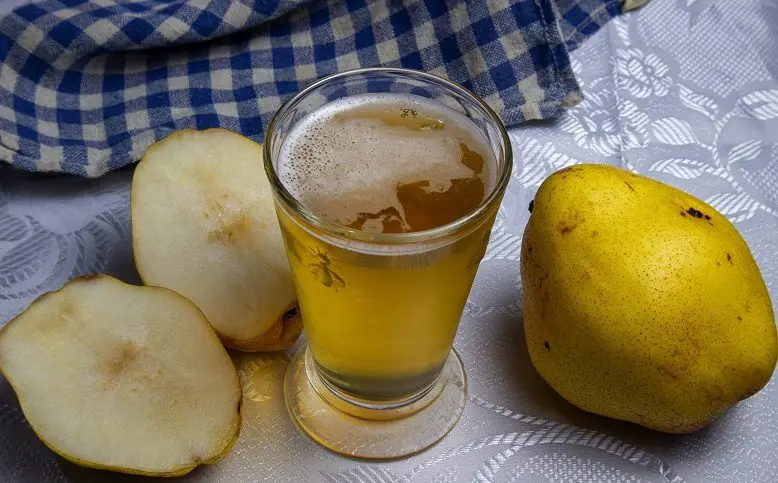In England it is called “perry”, in France – “poiret”, and in Spain – “perade”. Under these words, unfamiliar to Russians, pear cider is hidden – a low-alcohol carbonated drink similar to champagne. Next, we will consider the technology of making cider from pear juice at home. This is a relatively simple method with a minimum set of ingredients.
It is advisable not to wash the pears so that wild yeast remains on the surface, due to which the juice will begin to ferment. If the fruits are very dirty, wipe them with a clean, dry cloth.
The variety does not matter, as long as the pears are not sour, otherwise the amount of sugar must be increased so that the juice is sweet, but not cloying. I do not advise making pear cider without sugar, the drink will turn out to be low-alcohol and poorly carbonated.
Ingredients:
- pears – 15 kg;
- sugar – 60 grams per liter of juice.
You will also need containers for fermentation and bottles (plastic can be used) in which ready-made carbonated cider will be stored. It is important that the containers can withstand the pressure of carbon dioxide.
Experimental lovers can make pear-apple cider by mixing 1 part apple juice with 2-3 parts pear juice, or take other proportions. Technology doesn’t change.
Classic pear cider recipe
1. Cut the pears in half, remove the core, pits and rotten parts, which can make the finished drink bitter. Process the pulp into juice in any way possible.
2. Pour the juice into containers for fermentation, for example, three-liter jars. Put in a dark place at room temperature, cover with gauze so that insects do not get into the wort.
3. After 2-3 days, the juice will begin to ferment, foam will form at the top and a hiss will be heard. When these signs appear, add sugar (50 grams per liter) to the juice, mix, install a water seal or a rubber glove on the neck (pre-make a puncture with a needle in one of the fingers).

4. Transfer the fermented juice to a dark room with a temperature of 18-25°C. Fermentation lasts 7-20 days. When the water seal stops emitting gas (the glove deflates), sediment appears at the bottom, and the cider itself brightens, you can proceed to the next step.
5. Drain the drink from the sediment into another clean container. The easiest way to do this is with a thin tube. It turned out a young homemade pear wine, which needs to be saturated with gas.
6. Wash the cider bottles well, add 10 grams of sugar per liter of juice to the bottom of each. Sugar is needed for carbonation – saturation of the drink with carbon dioxide, which will appear during secondary fermentation.
7. Pour the cider into bottles, leaving a free space of 5-6 cm from the neck. Seal tightly with stoppers.
8. Transfer the bottles to a dark place at room temperature for 10-14 days. Check gas pressure once a day.
9. Homemade pear cider is ready, it remains to keep it in the refrigerator or cellar for 3-4 days before use.
Approximate strength 5-9 degrees. Shelf life at 8-16°C up to 12 months.










